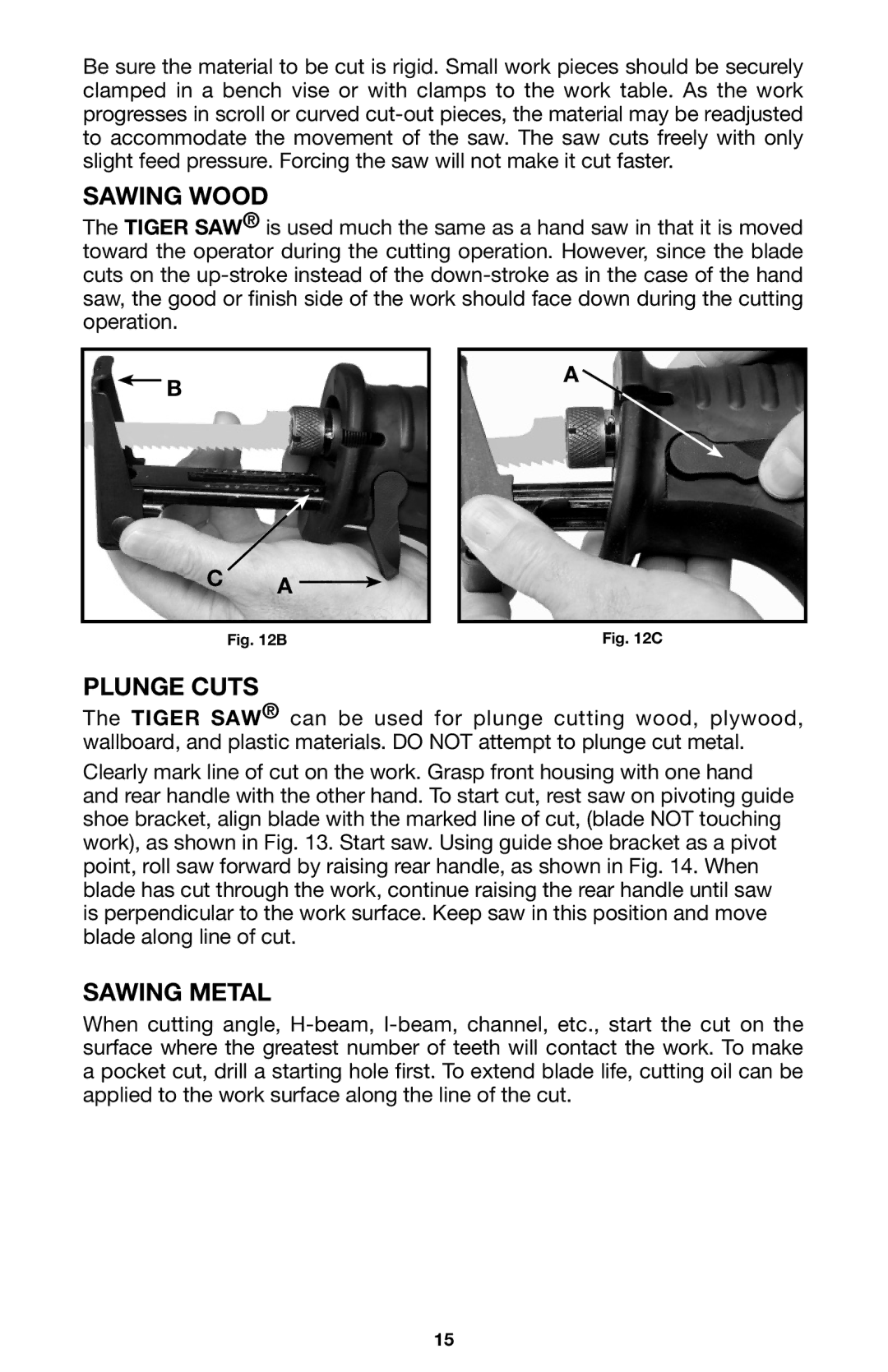
Be sure the material to be cut is rigid. Small work pieces should be securely clamped in a bench vise or with clamps to the work table. As the work progresses in scroll or curved
SAWING WOOD
The TIGER SAW® is used much the same as a hand saw in that it is moved toward the operator during the cutting operation. However, since the blade cuts on the
B
A ![]()
C A ![]()
Fig. 12B | Fig. 12C |
PLUNGE CUTS
The TIGER SAW® can be used for plunge cutting wood, plywood, wallboard, and plastic materials. DO NOT attempt to plunge cut metal.
Clearly mark line of cut on the work. Grasp front housing with one hand and rear handle with the other hand. To start cut, rest saw on pivoting guide shoe bracket, align blade with the marked line of cut, (blade NOT touching work), as shown in Fig. 13. Start saw. Using guide shoe bracket as a pivot point, roll saw forward by raising rear handle, as shown in Fig. 14. When blade has cut through the work, continue raising the rear handle until saw is perpendicular to the work surface. Keep saw in this position and move blade along line of cut.
SAWING METAL
When cutting angle,
15
